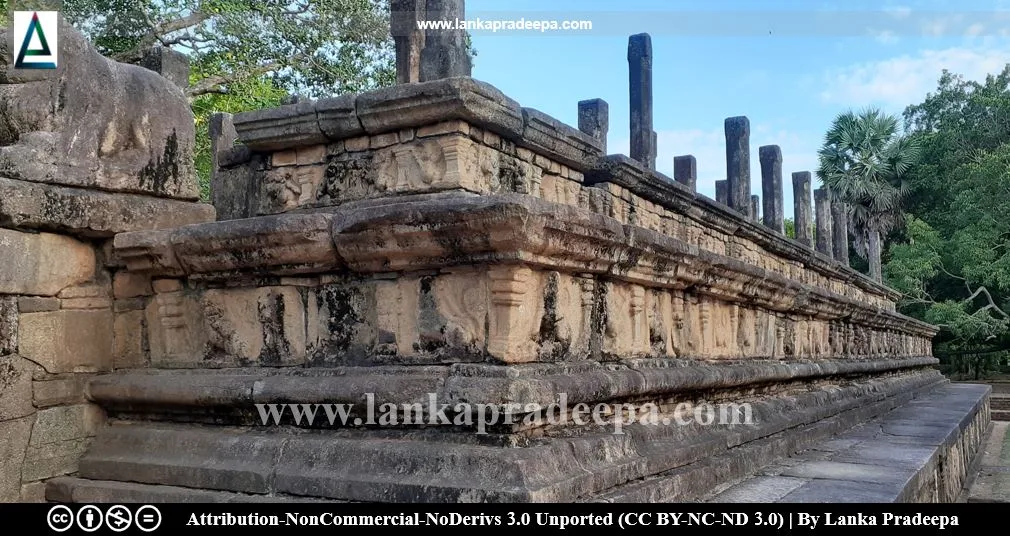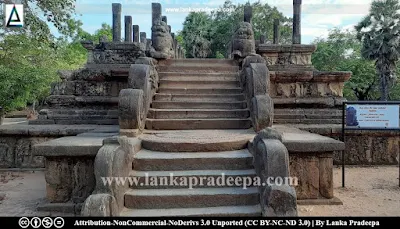
The Council Chamber of Parakramabahu the Great (Sinhala: මහාපරාක්රමබාහු රාජ සභාව, පොළොන්නරුව) is located to the east of the Parakramabahu Palace in the Ancient City of Polonnaruwa, Sri Lanka.
History
A label inscribed on the stone slab fixed at the upper level of the flight of steps of the building reveals the ancient name of this building as Raja Vaishya Bhujanga Mandapaya (Seneviratna, 1998). The chronicle Culavamsa mentions that the Rajavesyabhujanga was the name used to call the council chamber built by King Parakramabahu I [(1153-1186 A.D.) Paranavitana, 1950; Prematileke, 1990]. However, it has been found that the present form of the building may have come as a result of a later renovation, probably done during the reign of King Parakramabahu II (1236-1270 A.D.) of the Dambadeniya Period (Paranavitana, 1950).
Building
The present rectangular building has three consecutive levels and the sidewalls of each level have been covered with stone tablets containing carvings of dwarfs, elephants, lions, and horses (Jayasuriya, 2016; Wikramagamage, 2004). The flight of steps which is also built in three sections has two Korawak Gal (wingstones) and two Sandakada Pahana (two moonstones). The two stone lion figures at the upper-level welcome visitors to the building.
The uppermost platform consists of four rows of pillars, 12 in each row (Prematileke, 1990). The pillars are decorated with floral diagrams and it appeared that they once supported a wide-sloping roof without walls (Jayasuriya, 2016; Wikramagamage, 2004). The throne of the king was probably at the southern corner opposite the entrance podium (Prematileke, 1990).



 .
.
References
1) Jayasuriya, E., 2016. A guide to the Cultural Triangle of Sri Lanka. Central Cultural Fund. ISBN: 978-955-613-312-7. p.74.
2) Paranavitana, S. 1950. Guide to Polonnaruwa. Govt Press, Colombo. pp.8-9.
2) Paranavitana, S. 1950. Guide to Polonnaruwa. Govt Press, Colombo. pp.8-9.
3) Prematileke, L., 1990. The architecture of the Polonnaruwa period 800-1200 A.D. Wijesekara, N. (Editor in chief). Archaeological Department centenary (1890-1990): Commemorative series: Volume III: Architecture. Department of Archaeology (Sri Lanka). pp.41-42.
4) Seneviratna, A., 1998. Polonnaruva, Medieval Capital of Sri Lanka: An Illustrated Survey of Ancient Monuments. Archaeological Survey Department. p.119.
5) Wikramagamage, C., 2004. Heritage of Rajarata: Major natural, cultural and historic sites. Colombo. Central Bank of Sri Lanka. p.207.
Location Map
This page was last updated on 14 November 2022



